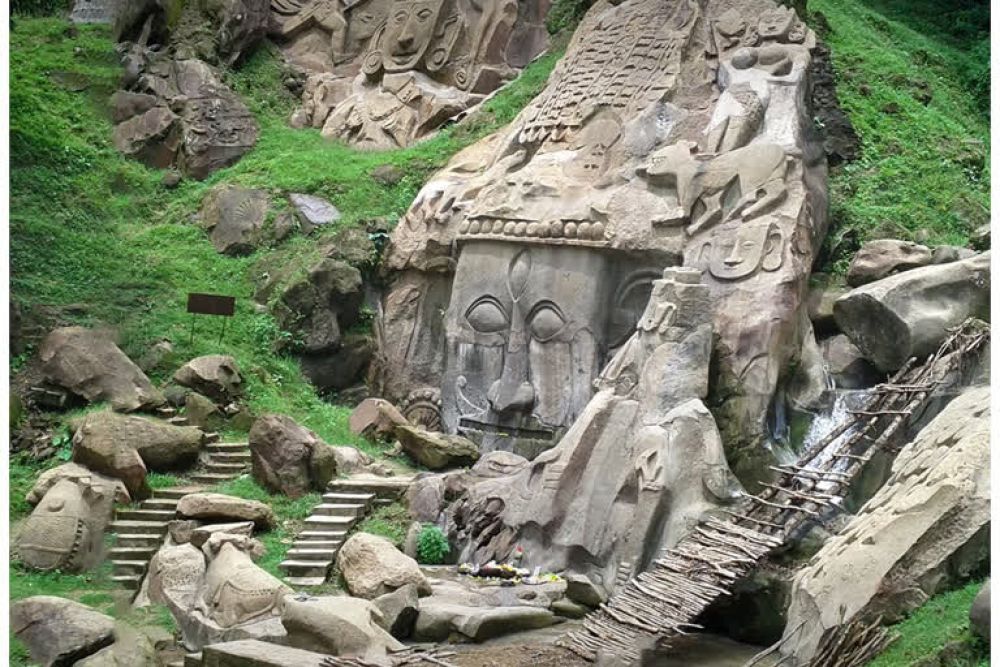

Unakoti, nestled in the verdant landscapes of Tripura in Northeast India, is a magnificent blend of nature and ancient artistry. Here, history intertwines with mythology to present tourists with a vista that's truly unique to the region. The word 'Unakoti' translates to 'one less than a crore' in Bengali, and according to local lore, it marks the number of rock-cut carvings and stone images scattered across this archaeological wonderland.
The roots of tourism in Unakoti stem from its mysterious past. It is believed that these carvings date back to the 7th to 9th centuries, although some argue they could be older, originating between the 10th and 12th centuries. The site is of colossal significance in the Indian subcontinent, thanks to its massive Bas-relief sculptures dedicated to Hindu deities, with the central figure being a colossal 30-foot-high head of Lord Shiva known as 'Unakotiswara Kal Bhairava'.
The origins of these carvings remain a puzzle, shrouded in legends and myths. One popular myth surrounding Unakoti points to Lord Shiva himself. It's said that Shiva, along with one crore gods and goddesses, stopped here for a night on their way to Kashi (Varanasi). Shiva asked all others to wake up before sunrise to continue their journey; however, none except Shiva awoke, and in his anger, he cursed the others to become stone images, hence the name 'Unakoti'.
Tourism began to grow in Unakoti when these awe-inspiring sites came into the spotlight, drawing the attention of travellers seeking spiritual and historical experiences. Over time, Unakoti became not just a pilgrimage for devotees but also a must-visit destination for archaeologists and history buffs. The government and various organizations have taken steps to preserve and promote Unakoti, turning it into an accessible tourist spot while maintaining its cultural reverence and ecological balance.
Recently, sustainable and eco-tourism have taken center stage in Unakoti. Efforts have been made to develop the region while ensuring that the impact on nature is minimal. Tourism now revolves around guided tours that educate visitors about the historical significance, the conservation efforts, and the myths associated with Unakoti. Adventure tourism is also gaining traction, with more and more tourists engaging in trekking and camping activities around the hilly terrains.
Digital engagements like virtual tours have also become popular, especially in the wake of the travel restrictions due to global events like the pandemic. This has allowed people from all corners of the world to experience the magic of Unakoti's carvings from the comfort of their homes.
Unakoti plays host to a major event during Ashokastami Mela, which draws a crowd of thousands, highlighting traditional performances, cuisine, and crafts, giving tourists a taste of the rich culture of Tripura. With each passing year, the footfall increases, putting Unakoti on the map both nationally and internationally.
The trend towards developing a robust infrastructure for tourism while keeping sustainability in mind indicates a promising future for Unakoti. The focus on community-based tourism ensures not only the growth in visitor numbers but also benefits the local population, preserving the site for generations to come.
Whether it's the intriguing history, the verdant surroundings, or the peaceful ambiance, Unakoti, Dharmanagar, in Tripura continues to enchant visitors and promises to be a key destination in India's tourism landscape for years to come.